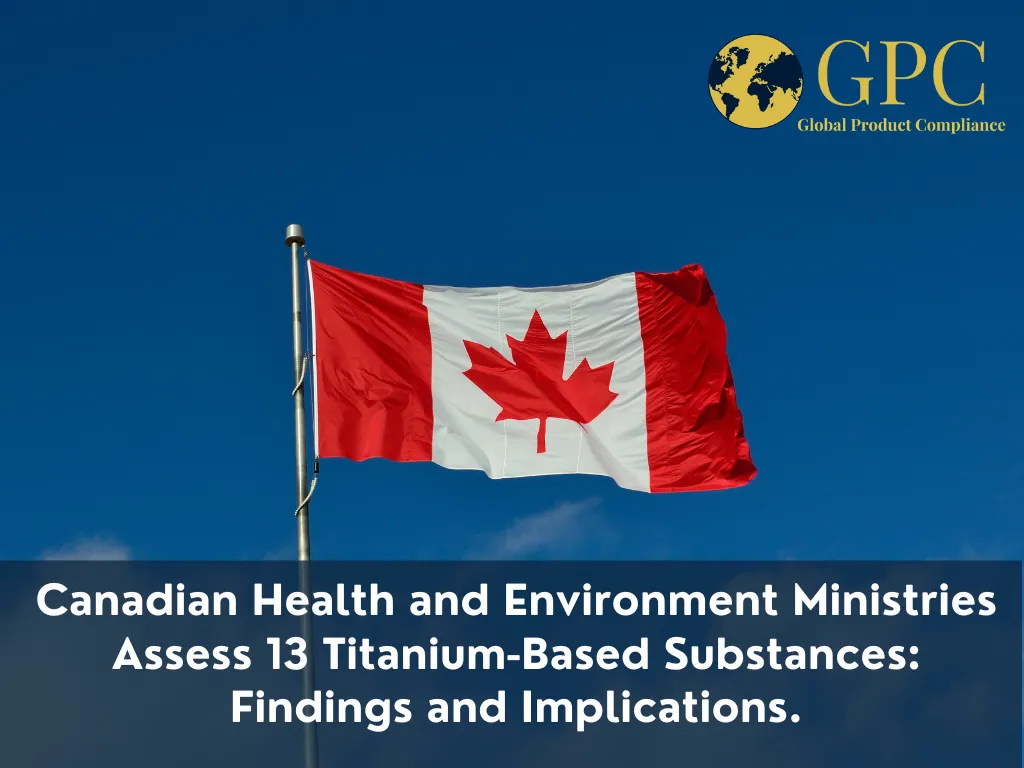News Details

Canadian Health and Environment Ministries Assess 13 Titanium-Based Substances: Findings and Implications.
The Canadian Environmental Protection Act, 1999 (CEPA), under its vigilant section 68, recently underwent a comprehensive assessment by the Environment Ministry and the Health Ministry. This review focused on a group of 13 substances, known collectively as the Titanium-containing Substances Group. The aim was to determine their potential environmental and health impacts. This article discusses the findings of this assessment and what they mean for Canada.
What are these Titanium-containing Substances?
Titanium, a naturally occurring metal, forms the core of these 13 evaluated substances. They range from well-known compounds such as titanium dioxide (TiO2), used in a variety of consumer products, to more complex chemicals such as titanium tetrachloride and tetrahydroxytitanium. The 13 chemicals are listed in the table below.
|
CAS number |
DSL name |
Common name |
|
546-68-9 |
2-Propanol, titanium(4+) salt |
Titanium tetraisopropanolate |
|
1070-10-6 |
1-Hexanol, 2-ethyl-, titanium(4+) salt |
Titanium tetrakis |
|
1317-80-2 |
Rutile (TiO2) |
Rutile (TiO2) |
|
1344-54-3 |
Titanium oxide (Ti2O3) |
Dititanium trioxide |
|
13463-67-7 |
Titanium oxide (TiO2) |
Titanium dioxide |
|
5593-70-4 |
1-Butanol, titanium(4+) salt |
Titanium tetrabutanolate |
|
7550-45-0 |
Titanium tetrachloride |
|
|
7705-07-9 |
Titanium chloride (TiCl3) |
Titanium trichloride |
|
12047-27-7 |
Titanate (TiO32-), barium (1:1) |
Barium titanate (IV) |
|
12060-59-2 |
Titanate (TiO32-), strontium (1:1) |
Strontium titanium oxide |
|
13825-74-6 |
Titanium, oxo[sulfato(2-)-O,O’]- |
Titanium oxide sulphate |
|
16919-27-0 |
Titanate(2-), hexafluoro-, dipotassium, (OC-6-11)- |
Dipotassium hexafluorotitanate |
|
20338-08-3 |
Titanium hydroxide (Ti(OH)4), (T-4)- |
Tetrahydroxytitanium |
Assessment Methods and Key Findings:
The inter-ministerial team employed the Ecological Risk Classification of Inorganic Substances (ERC-I) method, which focuses on both hazard and exposure levels, to assess ecological risks. This innovative approach combined predictive models, water quality data, and various statistical metrics. The conclusion? These 13 substances are unlikely to cause significant damage to the ecosystem.
Human Health and Exposure
The assessment extended beyond ecological impacts, to explore potential health risks to Canadians. The main sources of human exposure to these substances include air, water, food, and consumer products. Notably, food emerged as a major source of titanium exposure for the general population. Intriguingly, titanium was barely detectable in blood samples from the Canadian population, suggesting minimal health risks at current exposure levels.
Specific Risks and Safety Thresholds
Going deeper, the study identified a no-observed-adverse-effects level (NOAEL) for systemic exposure to titanium, taking into account various health endpoints. Moreover, for inhalation exposure, the study identified non-cancerous respiratory effects as the primary concern but deemed these to be unlikely at current exposure levels in the general population.
Conclusion
Encouragingly, this comprehensive study suggests that the 13 substances in the Titanium-containing Substances Group do not meet the CEPA criteria for being environmentally or health hazardous under current conditions. This conclusion represents a critical step in the understanding and management of these substances in Canada, ensuring a balance between use and safety.
We acknowledge that the above information has been compiled from Canada Gazette.


